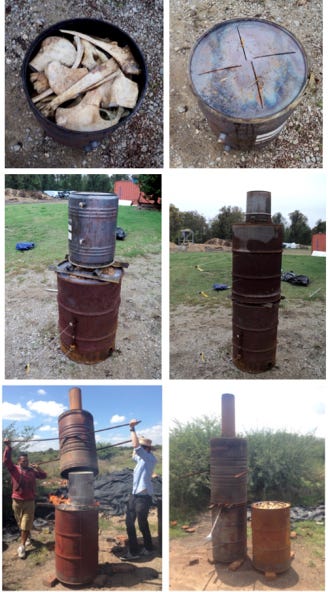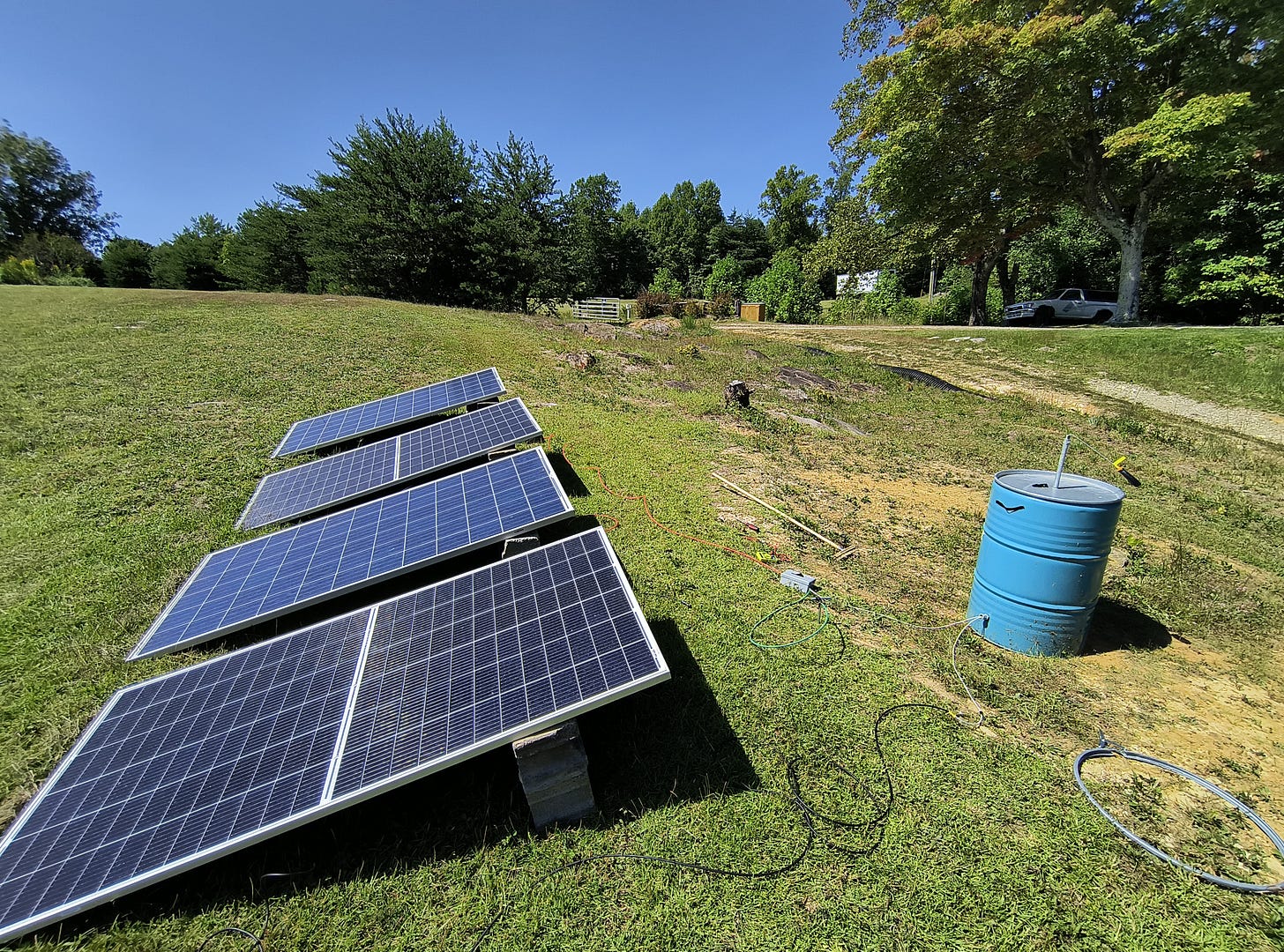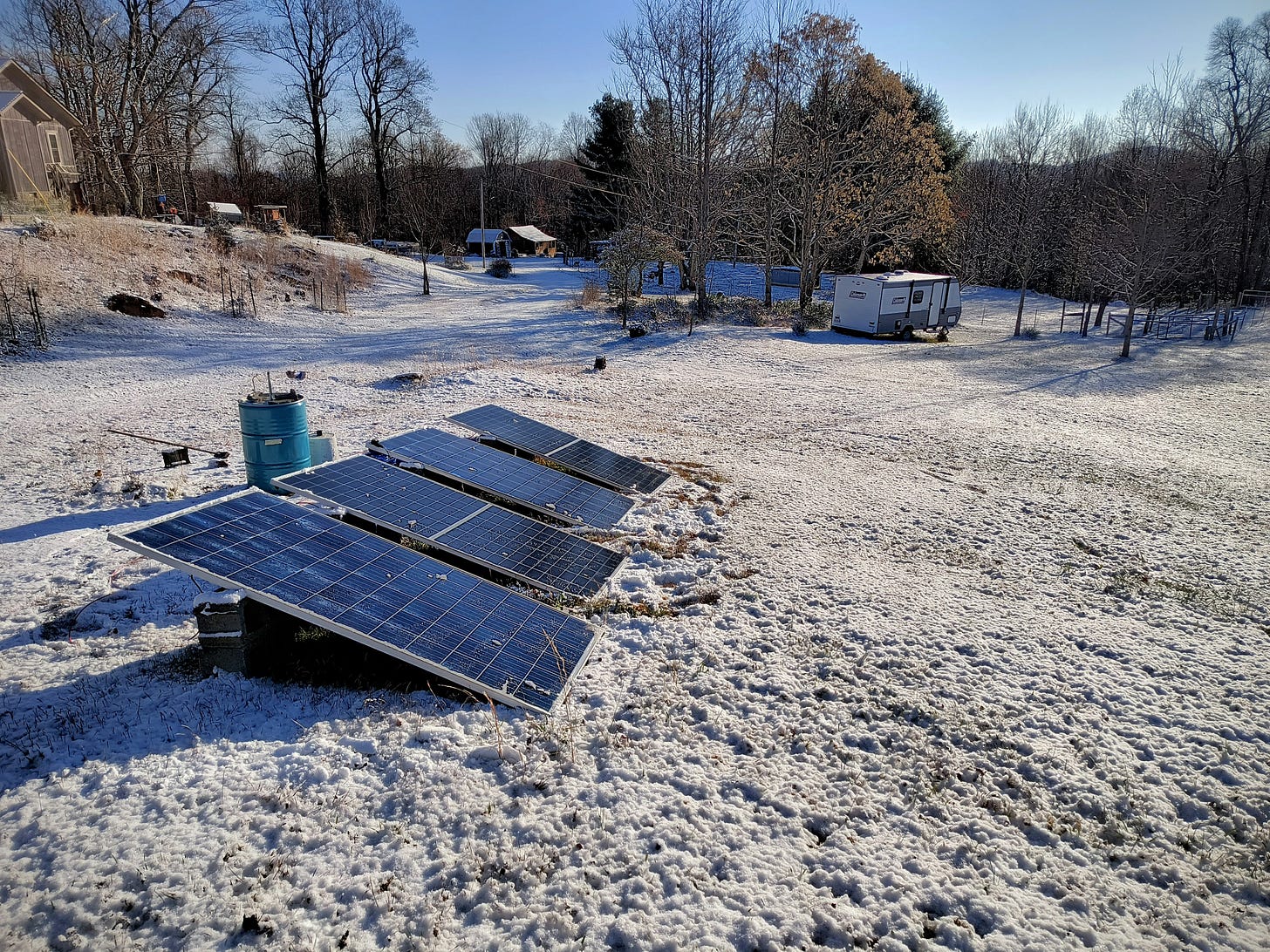I’ve been really bad about keeping this site updated the past few months - my apologies!
One of the main reasons for this - a reason, not an excuse (and I do commit to doing better in the future) - is a project I have been working on over the past 5-6 months to make biochar using only sunlight as a power source.
I was far from sure that I could get it to work. And I spent a lot of time feeling foolish and banging my head trying to solve various problems, remedy headaches, find and fix failures, etc.
And if I could get it to work, I wasn’t exactly sure what I was going to do with that information. And I’m still not sure.
For going-on-twenty-years-now every discovery I have ever made, every method or technique or tool I have ever developed, I have given away completely for free. If I thought it could be useful to others I gave it away in the form of internet resources, how-to videos, instruction manuals, journal publications. I have given countless lectures by remote and in-person workshops in locations around the world. I’ve answered questions by email and phone and fully described the state-of-the-science to the best of my ability at the time, holding nothing back.
But this time, it might be different. This might be an innovation worth patenting. I’m actually contemplating engaging a concept I have actively run away from all these years - intellectual property. (I still shudder as a I type those words…)
I don’t know yet where all this is going. This is new territory for me and I am figuring it out as I go. But at least for now I’ve decided to cram a lid onto my first impulse to Tell Everyone About This Awesome New Innovation and All About How It Works, Because It Is Just So Cool!
(If we decide to go the I.P./patent route, it’s not to hog all this coolness for ourselves. It’s because that might be the method that makes the most sense for spreading the potential benefits of this innovation far and wide. That’s what we’re trying to resolve right now…)
After several months of trial-and-error, last month I started getting some really promising results. So as not to bury the lede, a duly circumspect overview of my solar biochar prototype is posted just below (in this demonstrative case, for making bone char).
I feel guilty for having to hold back on the details of this invention at least for now. I’m so grateful to the subscribers, readers, and commentors who have shown so much support and enthusiasm for our work here. Since I have to keep some current R&D work under wraps for a bit, which is giving me pangs of guilt, I decided to create a new section of this site as a clearing house for our Open Access Materials.
In the new Open Access Materials section you’ll find graphical how-to manuals for setting up decentralized water treatment systems, a selection of video resources that offer instructionals and insights to some of our field projects, a bibliography of peer-reviewed publications, and other sundry practical materials.
(N.B.: Much of what is currently posted in this section will be familiar to readers who have encountered the website and projects of our non-profit Aqueous Solutions. New open access materials will be publicized here as they are produced, typically tied with project profiles in the Field Noteboook section.)
Also coming soon…
We have updates about new workshops and water system installations in Ecuador as well as the Guardianes del Agua (Water Guardians) game.
We’re just about to break ground on the sorbent regeneration facility Caminos de Agua is building to refurbish exhausted bone char for re-use in fluoride removal systems. The bone char/fluoride system economics are such that without sorbent regeneration this treatment method would not be feasible from a cost perspective. I’ll be posting updates from facility design and construction during the build.
We have also had some recent major advancements in our workshop/laboratory construction project here at biochar water treatment HQ. I might create a whole new section on this site to showcase key elements of our design-and-build. We’re incorporating a bevvy of eco-groovy design elements…
Without further ado…
Solar biochar/bone char
For context and to provide a baseline for comparison, here’s the method we have been using to make bone char for water treatment to remove excessive fluoride:
Figure SI-1 | Photograph series depicting bonechar pyrolysis system. Dried bone pieces were packed into a 95 L steel drum retort. The retort was closed and slots cut in the lid to allow the egress of pyrolysis gases. The retort was placed lidded-end down over a 200 L steel drum gasifier containing wood pieces. Another 200 L steel drum with chimney pipe attached was placed over the retort. Thermocouple probes were inserted into the gasifier drum and the bone retort to monitor temperature during pyrolysis. The wood gasifier was lit and allowed to completely pyrolyze into wood biochar. To achieve sufficient heating and a long enough dwell time for complete bone pyrolysis, the retort was transferred to a second wood gasifier drum. [Reference]
The bottom drum is operated as a high temperature (>900 C) gasifier for making wood-based biochar for removal of organic chemical contaminants, analogous to activated carbon. The heat from that process carbonizes a retort drum full of bones into bone char.
While the biochar bed in the lower gasifier drum can reach 900-1,000 C (or higher), the temperature the bone char retort is exposed to is wood gas flame temperature, around 600 C, from combustion of the pyrolysis gases given off by the wood in the lower drum. This is important since the optimal pyrolysis temperature for making bone char sorbent is 450-650 C. Overheating bone char results in a rapid destruction of fluoride sorption capacity.
The disadvantages of the above-described system include:
The fuel source required to provide the heat energy for charring bones (here, wood) is an additional cost in labor and materials (e.g., chopping and drying the wood to prepare for gasification), and may exert undesirable environmental impacts (e.g., in central Mexico where Caminos operates wood is scarce)
For safety and for proper operation the gasifier must be continuously monitored. After the first gasifier drumload of wood is finished, operators must move the hot bone retort and chimney drum to a second gasifier to continue the burn, which is a safety risk.
Burn duration, maximum temperature, and temperature variability inside the bone retort during pyrolsyis are somewhat difficult to control. Given a consistent gasifier feedstock source, a skilled artisan can achieve moderate reproducibility in thermal conditions and fluoride sorption properties between batches.
Compare with this:
Solar panels wired to a drum oven.
Because of the potential I.P./patent concerns expressed above I can’t say how this works right now. But I can say that this photo was taken during an early prototype test on a mid-September afternoon at around 36 degrees North latitude. Within 2 hours the temperature in the reactor reached 530 C.
That was a promising start, but there were a number of problems and hangups and fails to resolve with the system (which also included repairing damage done by Hurricane Helene…)
By December I had made significant advancements and had succeeded in resolving a few rounds of troubleshooting.
December, however, brought its own set of challenges for solar biochar/bone char innovation - including shorter days, a lower sun angle, more frequent overcast conditions, lower ambient temperatures, and the occasional need for snow removal.
Despite proximity to the winter solstice, on clear sunny days the system was able to attain and hold excellent thermal conditions for making bone char sorbent. For example:
kLux is a measure of sunlight intensity falling on the PV panels. The bottom plot shows temperature within the pyrolysis reactor. A control system (thermostat) was used to keep the temperature just below 500 C. On the day these data were collected the average ambient temperature was 33 F with a high of 49 F and a low of 17 F.
Even on a December day at temperate latitude the system was able to maintain 500 C for about 4 hours. These are excellent pyrolysis conditions for making bone char sorbent for fluoride removal.
Preliminary data indicate our solar bone char substantially outperforms two commercially available bone chars for fluoride removal from groundwater:
In summary…
Process uses sunlight falling on PV panels to provide the energy to drive pyrolysis - and thus does not require wood or other biomass fuel, propane, etc.
High precision temperature control is achieved. A suitably sized PV array can provide ample power even when skies are partly cloudy or overcast.
Labor inputs are simplified and reduced. Feedstock is added to the reactor, the thermostat is set, and the reactor is switched on. The reactor can be shut off at any time, or allowed to cool naturally after sunset.
Ongoing R&D…
Scale up for larger batch sizes (prototype batch reactor size is 20 gallons (75 liters).
Possible to make pseudo-activated biochar for adsorption of organic chemical contaminants akin to high temperature gasifier biochar?
Simple emission controls for offgassing pyrolysis vapors.
Production of commercial units for sale to biochar enthusiasts? Inquire if interested…
Thank you again for your ongoing support and enthusiasm for our work! I will do better about providing regular updates here. Your support and encouragement is a major assist to our ongoing R&D and field service projects!
More to come soon…






You are the cool kids! NO doubt! ⚡️🫡
I wouldn't feel guilty, at least get the intellectual property rights so someone else from some other country doesn't take your ideas and make a million bucks from them!
I've been using your kiln design for a few years now, not for water treatment unfortunately (although it's always been in the back of my mind that I have to sort that out soon), but for making charcoal from all our leftover coconut husks after harvests. Some I use for cooking and the rest goes into my compost making. I really appreciate all the work you do and somewhat suspect you may in fact have cloned yourself and that's how you're getting all this work done whilst also running a farm and being a father.